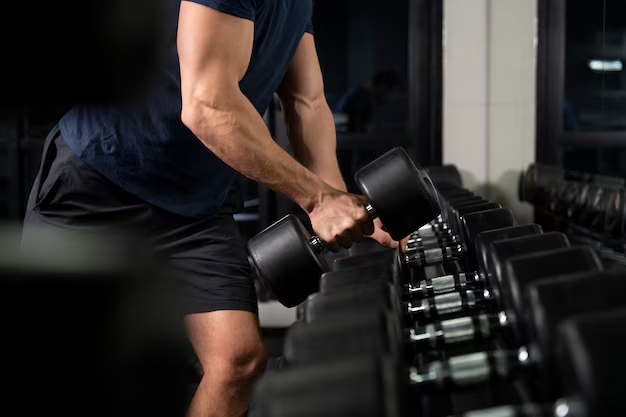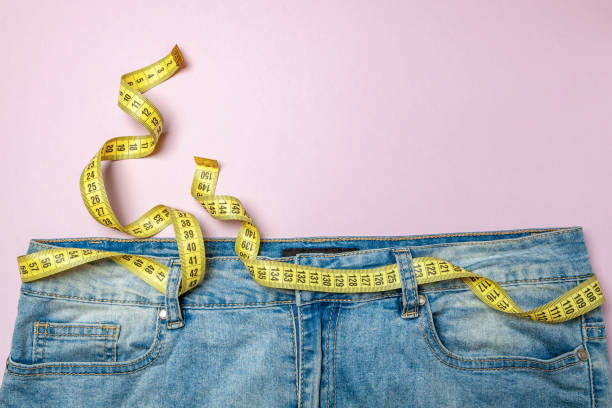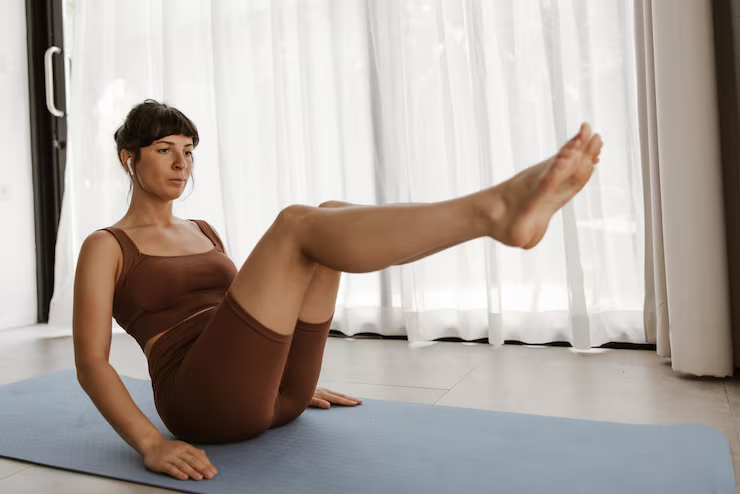Struggling with stubborn fat in your legs can be frustrating, especially around the inner thighs, outer thighs, and calves. Many people search for how to burn fat in legs, but it’s important to know that spot reduction isn’t possible. Fat loss happens across the entire body, and genetics play a role in where you lose it first.
The best approach is a combination of regular cardio, strength training, and a healthy diet. Cardio exercises like running, cycling, and HIIT workouts help burn calories and reduce overall body fat. Strength training, especially lower-body moves like squats, lunges, and deadlifts, tones and builds lean muscle, giving your legs a more defined look.
To maximize results, pair your workouts with a nutrient-rich, balanced diet that’s high in protein and fiber while keeping processed foods to a minimum. Stay consistent, and over time you’ll notice slimmer, stronger legs and improved overall fitness.

In this comprehensive guide, you’ll discover the top 8 proven tips on how to burn leg fat, supported by fitness science and practical advice. Whether you’re a beginner or looking to break a plateau, this article is your roadmap to leaner, stronger legs.
✅ Why Leg Fat Is Hard to Lose
Leg fat can be particularly stubborn due to a combination of genetics, hormones, and body composition. For many, the lower body—especially the thighs and hips—stores more fat because of higher estrogen levels, which promote fat storage in these areas. This is why people often search for how to burn fat in legs when they notice slow progress.
Another reason leg fat is tough to lose is that the body tends to burn fat from different areas at different rates. Even with regular exercise, your legs may be the last place you see changes. Factors like a sedentary lifestyle and poor circulation can also make leg fat more resistant.
The key to overcoming this challenge is focusing on overall fat loss through a mix of cardio, strength training, and a healthy diet. This holistic approach will gradually reduce leg fat while improving muscle tone and overall body composition.
Leg fat tends to be stubborn due to a combination of genetics, hormonal factors, and lifestyle habits. Women especially store more fat in their thighs and hips due to higher levels of estrogen, which promotes fat storage in the lower body.
🔥 Top Tips to Burn Fat in Legs
Include High-Intensity Interval Training (HIIT)
High-Intensity Interval Training (HIIT) is one of the most powerful strategies for those wondering how to burn fat in legs. This workout style alternates short bursts of intense exercise with brief rest or lower-intensity periods, allowing you to burn more calories in less time compared to steady-state cardio. It’s highly effective for targeting stubborn fat while improving cardiovascular fitness.
By working at maximum effort during intervals, HIIT elevates your heart rate and boosts metabolism, helping you continue burning calories long after the workout ends. Movements like sprint intervals, jump squats, and cycling sprints engage major leg muscles, making HIIT an excellent choice for how to burn fat in legs while also enhancing strength and tone.
For best results, perform HIIT two to three times per week for 20–30 minutes per session. Combine your training with proper nutrition, hydration, and recovery to maximize how to burn fat in legs and achieve lean, sculpted legs over time.
Why HIIT Works for Leg Fat:
Burns more calories in less time
Increases metabolism even after your workout (afterburn effect)
Engages major leg muscles like quads, hamstrings, and glutes
Sample HIIT Workout (20 mins):
Jump squats – 30 sec
Rest – 30 sec
High knees – 30 sec
Rest – 30 sec
Lunges – 30 sec
Rest – 30 sec
Repeat for 4 rounds.
Focus on Strength Training for Lower Body

Strength training is a crucial part of any plan for how to burn fat in legs because it builds lean muscle, boosts metabolism, and enhances overall muscle tone. Unlike cardio alone, strength training continues to burn calories even after your workout, making it a powerful fat-loss tool.
Lower body exercises such as squats, lunges, deadlifts, and step-ups target major leg muscles, including the quads, hamstrings, and glutes. As these muscles grow stronger, they require more energy to maintain, which helps your body burn fat more efficiently over time. This process gradually reduces leg fat while improving definition.
Aim to include lower body strength workouts two to three times per week, allowing rest days in between for muscle recovery. Pairing these workouts with a nutrient-rich diet and consistent cardio will accelerate fat loss results, giving you slimmer, stronger, and more sculpted legs over the long term.
Building muscle in your legs helps tone the area, increase your resting metabolism, and burn more fat over time.
Key Exercises:
Squats
Lunges
Deadlifts
Step-ups
Leg presses
Muscle is metabolically active tissue. The more muscle you have in your legs, the more calories you burn—even while resting.
Optimize Your Nutrition for Fat Loss
When it comes to how to burn fat in legs, your nutrition plays just as important a role as exercise. No matter how hard you train, poor eating habits can slow or even stall your progress. A balanced diet helps create the calorie deficit needed for fat loss while providing the nutrients your body needs to perform and recover.
Focus on whole, nutrient-dense foods such as lean proteins, vegetables, fruits, whole grains, and healthy fats. Protein supports muscle growth and repair, while fiber keeps you full and helps regulate blood sugar. Limiting processed foods, added sugars, and excess saturated fats can speed up overall fat loss, including in your legs.
Hydration is also key—drinking enough water supports metabolism and reduces water retention that can make legs appear puffier. By combining smart nutrition with consistent training, you’ll set yourself up for leaner legs and improved overall health.
No matter how hard you train, you can’t out-train a bad diet. For effective leg fat loss, you need a caloric deficit—burning more calories than you consume.
Nutrition Tips:
Eat more protein: Helps preserve lean muscle while losing fat (chicken, fish, tofu, legumes).
Avoid processed carbs & sugars: These spike insulin and encourage fat storage, especially in thighs.
Hydrate: Water supports metabolism and reduces water retention in the legs.
Control portions: Use smaller plates, track calories if needed.
Add More Cardio—Smartly

Cardio is a powerful tool when learning how to burn fat in legs, but doing it strategically can make all the difference. While endless hours of steady-state cardio aren’t necessary, incorporating the right types and amounts can help you burn more calories and speed up fat loss.
Activities like brisk walking, cycling, swimming, and running engage large muscle groups in the legs, improving endurance while targeting fat stores. For best results, mix moderate-intensity cardio with higher-intensity sessions like hill sprints or cycling intervals to maximize calorie burn and keep your workouts engaging.
Aim for at least 150 minutes of moderate cardio or 75 minutes of vigorous cardio each week, spread over several days. Combine this with strength training and proper nutrition for a balanced approach. Over time, smart cardio programming will help slim your legs while boosting cardiovascular health and overall fitness.
Cardiovascular exercise helps burn calories and promotes overall fat loss, including the legs.
Best Cardio for Legs:
Incline walking or treadmill walking
Cycling
Stair climbing
Jump rope
Swimming
Reduce Water Retention and Inflammation
When exploring how to burn fat in legs, it’s essential to understand that not all leg size comes from fat—water retention and inflammation can also make legs appear swollen or puffy. Tackling these issues can reveal more definition, help you feel lighter, and support your fat-loss goals.
To reduce water retention, start by drinking plenty of water throughout the day. Staying hydrated helps flush out excess sodium, a common cause of bloating. Limiting processed foods high in salt and sugar is also crucial. Incorporating potassium-rich foods like bananas, spinach, and sweet potatoes can further balance fluid levels and assist in how to burn fat in legs by promoting a leaner appearance.
Fighting inflammation involves adopting an anti-inflammatory diet rich in berries, leafy greens, fatty fish, nuts, and seeds. Avoid excessive alcohol and refined carbs, as they can worsen inflammation. When combined with regular exercise and healthy eating, these steps can greatly enhance how to burn fat in legs effectively.
Sometimes what looks like fat is actually water retention or inflammation, especially around the thighs and calves.
Ways to Reduce It:
Reduce sodium intake: Too much salt causes bloating and water retention.
Increase potassium: Found in bananas, sweet potatoes, and avocados.
Cut processed foods: These often contain inflammatory oils and additives.
Drink green tea: A natural diuretic and metabolism booster.
Stay Consistent with Daily Movement
When it comes to how to burn fat in legs, consistency is just as important as workout intensity. Even the best training plan won’t work if you’re only active a couple of times a week. Incorporating daily movement keeps your metabolism active and helps maintain steady fat loss.
Simple habits like taking the stairs, walking instead of driving short distances, or doing quick bodyweight exercises at home can add up over time. These small bursts of activity keep your leg muscles engaged and encourage your body to use stored fat for energy.
Aim to blend structured workouts—like strength training and cardio—with everyday movement. Using a step tracker or setting reminders to get up and move every hour can help you stay on track. Over weeks and months, this consistent activity will lead to leaner, stronger legs and improved overall health.
Aside from gym workouts, daily movement plays a huge role in long-term fat loss. This is known as NEAT (Non-Exercise Activity Thermogenesis).
Ways to Increase NEAT:
Take the stairs instead of the elevator
Walk or cycle for errands
Stretch or do bodyweight exercises during TV time
Use a standing desk
Get Enough Sleep and Manage Stress

When exploring how to burn fat in legs, many people overlook the role of sleep and stress management. Poor sleep and chronic stress can disrupt hormones like cortisol and insulin, which influence fat storage—often making it harder to lose stubborn leg fat.
Aim for 7–9 hours of quality sleep each night to allow your body to recover, regulate appetite, and maintain a healthy metabolism. Creating a consistent bedtime routine, limiting screen time before bed, and keeping your sleep environment dark and cool can all improve rest.
Stress management is equally important. High stress levels can trigger cravings for sugary, high-calorie foods and promote fat storage in the lower body. Practices like meditation, deep breathing, yoga, or even a daily walk can help keep stress in check. Combined with exercise and proper nutrition, quality sleep and stress control will accelerate your progress toward slimmer, toned legs.
Poor sleep and high stress levels can elevate cortisol, a hormone linked to increased fat storage, particularly in the lower body.
Improve Recovery:
Sleep 7–9 hours a night
Wind down with a screen-free routine
Practice mindfulness, yoga, or deep breathing
Limit caffeine after 2 PM
Track Progress and Set Realistic Goals

When learning how to burn fat in legs, tracking your progress and setting realistic goals is essential for staying motivated and focused. Without measurable benchmarks, it’s easy to feel like you’re not making progress—even when you are.
Start by setting specific, attainable goals such as improving leg strength, reducing body fat percentage, or fitting into a particular clothing size. Take measurements, progress photos, or track how your clothes fit rather than relying solely on the scale. Leg fat often decreases gradually, so visual and physical cues can show changes better than weight alone.
Use a journal or app to log workouts, meals, and how you feel each week. Celebrate small wins and adjust your approach if needed. By being consistent and patient, you’ll steadily move toward your goal. Clear tracking helps keep your motivation high and ensures your strategy for burning leg fat remains effective and sustainable.
Losing leg fat takes time, and focusing only on the scale can be discouraging. Instead, track progress using multiple methods:
Track By:
Taking leg measurements
Noting how clothes fit
Tracking strength improvements
Taking progress photos every 2–3 weeks
🥗 Sample 1-Day Leg Fat Burning Meal Plan
| Meal | Foods |
|---|---|
| Breakfast | 3 egg whites + 1 whole egg, spinach, whole-grain toast |
| Snack | Greek yogurt + berries |
| Lunch | Grilled chicken salad with olive oil & quinoa |
| Snack | Apple + almond butter |
| Dinner | Salmon, steamed broccoli, sweet potato |
| Hydration | 8–10 glasses water + green tea |
Conclusion

Understanding how to burn fat in legs takes a long-term, balanced approach rather than relying on quick fixes or spot-reduction myths. Combining strength training, smart cardio, balanced nutrition, and daily movement builds the foundation for steady fat loss and toned muscles. Supporting factors like reducing water retention, managing inflammation, improving sleep, and controlling stress also make it easier for your body to burn fat effectively.
Tracking progress is another key part of how to burn fat in legs. Using measurements, photos, or fitness milestones helps you stay motivated and see changes beyond the scale. Setting realistic goals ensures you remain focused without getting discouraged by gradual progress. Every small improvement adds up over time.
By staying consistent, patient, and adaptable, you’ll see slimmer, more defined legs while improving overall health and energy levels. Eventually, how to burn fat in legs becomes second nature, making your results sustainable for the long term.
FAQs
Q1. Can I target only my legs for fat loss?
No. Spot reduction is a myth. You can’t lose fat in one specific area by exercising it alone. To see results in your legs, you need to focus on overall fat loss through a combination of strength training, cardio, and proper nutrition.
Q2. What’s the best exercise for how to burn fat in legs?
There’s no single “best” exercise, but a mix of squats, lunges, deadlifts, and cardio activities like cycling or running can effectively burn calories and tone your legs.
Q3. How long does it take to see results in my legs?
It varies depending on your starting point, consistency, and lifestyle. Most people notice visible changes within 8–12 weeks of following a balanced routine.
Q4. Does walking help reduce leg fat?
Yes. Walking burns calories and engages your leg muscles, making it a great low-impact option for fat loss.
Q5. Should I do more cardio or strength training?
Both are important. Cardio helps burn calories, while strength training builds lean muscle that increases your resting metabolism and improves leg definition.
